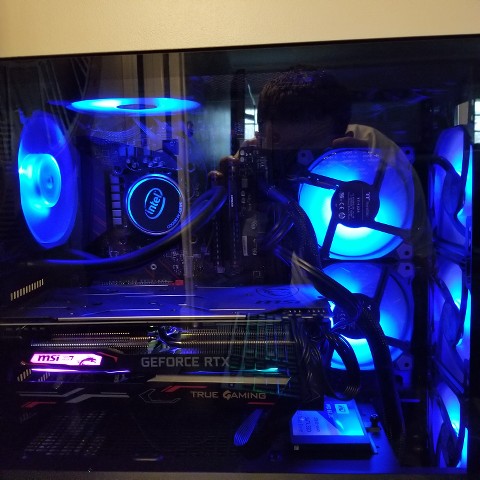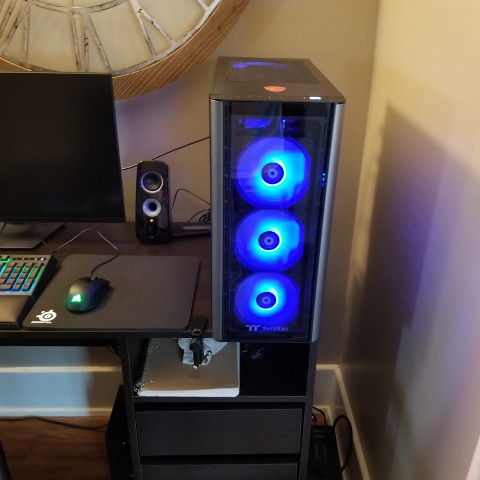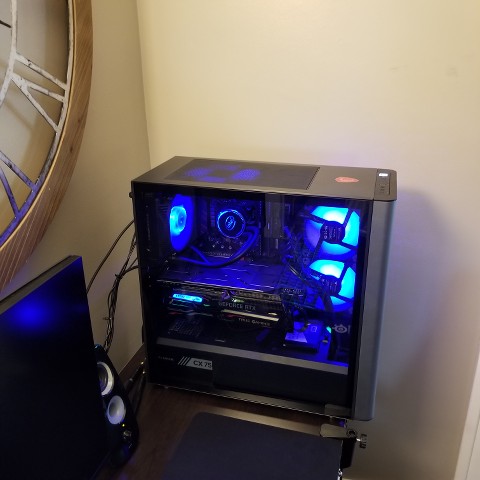I recently built my first PC and I wanted it to be VR capable. I looked up some builds and got my parts together and built it. It runs fine I just want to ensure I made no obvious mistakes and see what could be done to improve the build. Below are the specs and pictures of the Build.
Case: Thermaltake Level 20 MT
PSU: Corsair CX750M
Motherboard: MSI MPG Z390 Gaming Plus
CPU: Intel i7-9700k
GPU: geforce rtx 2070 gaming z 8g
RAM: Corsair Vengeance LPX DDR4 16GB (2@8GB)
CPU Cooler: Intel Thermal Solution ts13x
Storage: WB Blue 1TB 3D NAND Sata SSD
Fans: 6 ThermalTake Pure Plus 12 RGB TT Premium Edition 120mm
Display: Dell 27 Gaming Monitor S2719DGF
I learned later that the 3 intake fans on the front of the case were not very effective due to there only being a once inch gap between the fans and the glass. To compensate I put to more intakes on the side. I mounted the radiator to the rear exhaust and put one more exhaust fan on the top of the case. all fans but the 3 front intakes are set to variable speed based on temperature. Also I have been considering moving the radiator to the top and moving the top fan to the exhaust.



Please let me know your thoughts.
Thank you!
Case: Thermaltake Level 20 MT
PSU: Corsair CX750M
Motherboard: MSI MPG Z390 Gaming Plus
CPU: Intel i7-9700k
GPU: geforce rtx 2070 gaming z 8g
RAM: Corsair Vengeance LPX DDR4 16GB (2@8GB)
CPU Cooler: Intel Thermal Solution ts13x
Storage: WB Blue 1TB 3D NAND Sata SSD
Fans: 6 ThermalTake Pure Plus 12 RGB TT Premium Edition 120mm
Display: Dell 27 Gaming Monitor S2719DGF
I learned later that the 3 intake fans on the front of the case were not very effective due to there only being a once inch gap between the fans and the glass. To compensate I put to more intakes on the side. I mounted the radiator to the rear exhaust and put one more exhaust fan on the top of the case. all fans but the 3 front intakes are set to variable speed based on temperature. Also I have been considering moving the radiator to the top and moving the top fan to the exhaust.



Please let me know your thoughts.
Thank you!

